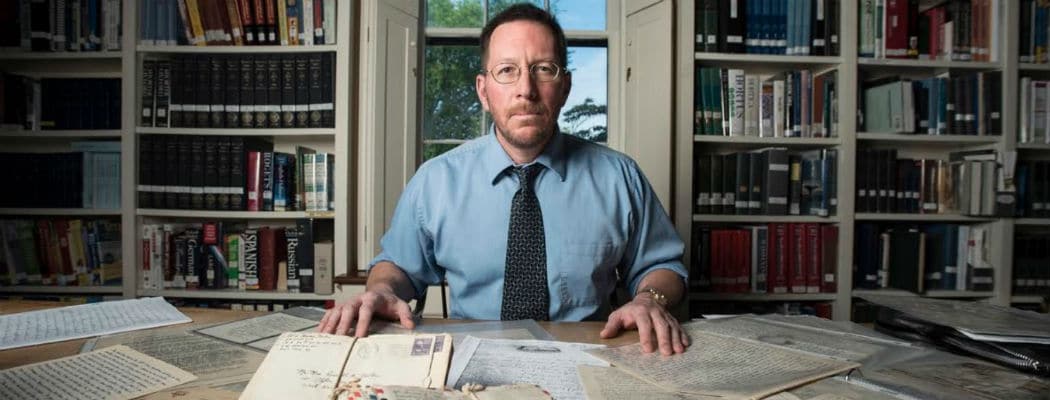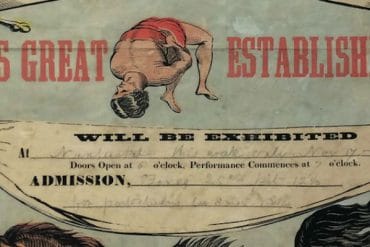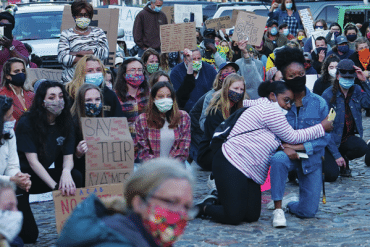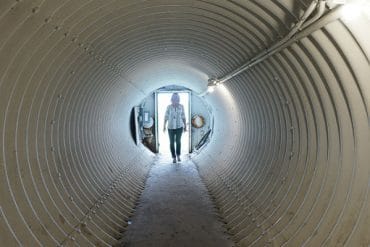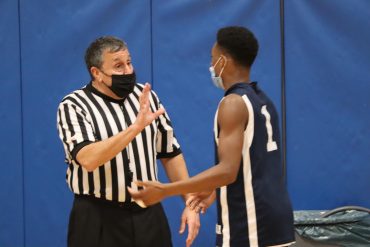One historian’s mission to collect a million of the greatest war letters ever written.
 For the last twenty years, Andrew Carroll has traveled to all fifty states and forty countries in search of the greatest war letters ever written. His collection now numbers well over 100,000 and touches upon every American conflict stretching back to the Revolutionary War. This spring, Carroll launched a campaign to collect and protect a million letters so that future generations will be able to understand American history on a deep and personal level.
For the last twenty years, Andrew Carroll has traveled to all fifty states and forty countries in search of the greatest war letters ever written. His collection now numbers well over 100,000 and touches upon every American conflict stretching back to the Revolutionary War. This spring, Carroll launched a campaign to collect and protect a million letters so that future generations will be able to understand American history on a deep and personal level.
“Nantucket is my second home,” said Carroll whose mother and aunt live at Sherburne Commons and whose cousin, Dr. Margot Hartmann, serves as the president of the Nantucket Cottage Hospital. Although he returns often to visit his family, Carroll’s most recent trip to the island was all business.
Just before Memorial Day, Carroll was handed a treasure trove of letters kept meticulously by longtime Nantucketer Chuck Gifford. “This is one of the most extraordinary collections we’ve ever received,” Carroll told Gifford in the Great Hall of the Atheneum, where he was giving a presentation. Held in two thick binders, the hundreds of letters were written by Gifford’s grandfather during World War I. Nantucket native, Charles Conyngham Gifford, after whom Chuck is named, was in the 101st Artillery 88th Aero Squadron and ultimately lost his leg to machine gun fire. The letters, many addressed to his home on Nantucket, chronicle the Great War in exquisite personal detail. “I want to make sure they survive,” Gifford said of the letters. “If you read all of this, it’s an amazing history of what happened at that time.”
No one knows this better than Andrew Carroll, who travels with a briefcase of some of his most prized letters literally handcuffed to his wrist. “What I find so remarkable about letters is that they’re among the most egalitarian art forms we have,” Carroll said. “Anybody can pick up paper and a pencil and compose something that will resonate for centuries.”
 Leafing through his collection on hand, Carroll jumped through American history. He read a letter written during the Pearl Harbor bombing and then a tearstained letter written by someone at Ground Zero during the September 11th attack. He gingerly held up a WWII letter with a bullet hole shot through the center, and then another written on Hitler’s stationery by a US soldier who had just stormed the Fuhrer’s apartment in Munich. He read a letter written by a former slave during the Civil War who had joined the Union Army and was writing to his former master saying that his unit was bearing down on his plantation and that he would have his vengeance.
Leafing through his collection on hand, Carroll jumped through American history. He read a letter written during the Pearl Harbor bombing and then a tearstained letter written by someone at Ground Zero during the September 11th attack. He gingerly held up a WWII letter with a bullet hole shot through the center, and then another written on Hitler’s stationery by a US soldier who had just stormed the Fuhrer’s apartment in Munich. He read a letter written by a former slave during the Civil War who had joined the Union Army and was writing to his former master saying that his unit was bearing down on his plantation and that he would have his vengeance.
At the Atheneum, Carroll brought these letters to life, sharing each author’s story with a sincerity and familiarity that transcended time. Indeed, history is far from dry for him. Instead, Carroll seems to have internalized each of these letters, so when he speaks about them or reads their verses his voice trembles at their sheer gravity. “One of the things that has struck me so much about these writers is the wisdom and maturity and profundity of what they’ve put on paper,” he said, “this despite how young so many of them are.”
Family is at the root of Carroll’s letter project. During his sophomore year of college, his childhood home in Washington DC burned to the ground. “Everything we had was destroyed,” he said. “All of our letters and photos literally went up in smoke.” Upon hearing about the tragedy, a distant cousin, James Carroll Jordan, contacted Carroll and said he wanted to share with him a letter he had written during World War II when he was serving as a P-51 pilot. “I’ll never forget reading the first line,” Carroll said. It read, “Dear Betty Anne, I saw something today that makes me realize why we’re over here fighting this war.” The letter went on to describe Jordan’s experience liberating the Nazi concentration camp in Buchenwald.
Overcome by the vivid details of torture chambers, bodies and other grotesque scenes of human suffering, Carroll knew that the letter was an absolutely crucial piece of history that needed to be protected. Moreover, he knew that there were other letters out there that needed to be saved. “This is what sparked the whole idea [for the Legacy Project],” Carroll said.
 On Veterans Day in 1998, a letter Carroll wrote appeared in the nationally syndicated “Dear Abby” advice column in which he asked people to send him their war letters for preservation. Several days later, the post office called Carroll up, angrily saying that he needed to pick up his mail. “You might want to bring a van,” the postman said. When Carroll arrived, there were bins and bins full of letters from wars throughout American history. “It felt like Christmas,” he said. “I remember sitting in my car opening up these bundles and each of them was a surprise.”
On Veterans Day in 1998, a letter Carroll wrote appeared in the nationally syndicated “Dear Abby” advice column in which he asked people to send him their war letters for preservation. Several days later, the post office called Carroll up, angrily saying that he needed to pick up his mail. “You might want to bring a van,” the postman said. When Carroll arrived, there were bins and bins full of letters from wars throughout American history. “It felt like Christmas,” he said. “I remember sitting in my car opening up these bundles and each of them was a surprise.”
Since starting the Legacy Project to protect these correspondences, Carroll founded the Center for American War Letters at Chapman University where he’s a resident historian. The letters have inspired two New York Times best sellers, an Emmy Award-winning documentary, and most recently a play performed by the likes of Laura Dern, Common, Annette Bening, and other Oscar-nominated and Oscar-winning actors. “Our organization is 100 percent nonpolitical,” Carroll said. “It’s about the troops and what their families go through…that’s what we want to get through to people, the humanity of it.” Carroll has also volunteered as a counselor for veterans of the War in Iraq and Afghanistan at Walter Reed Hospital suffering from PTSD.
“When we think of war memorials and monuments, we often envision these grand structures of stone and steel,” Carroll said. “But what strikes me about these letters is that despite how fragile and delicate some of them are, they’re among the most enduring tributes we have to those that serve. They remind us that their sacrifice can extend beyond the battlefield. They remind us of the history they capture. And they remind us about the resilience of the human spirit.”
To learn more about Andrew Carroll’s Million Letters Campaign or to donate war letters of your own, visit www.WarLetters.us.


